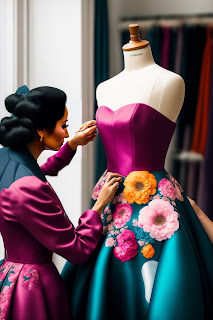Women in the fashion industry
The fashion industry has long been associated with women, both as consumers and as designers, models, and influencers. In recent years, women have made significant strides in the fashion industry, both in terms of leadership positions and creating more inclusive and diverse fashion.
This essay will examine the role of women in the fashion industry, the challenges they face, and the opportunities for further growth and success.
The Role of Women in the Fashion Industry
Women have played a crucial role in the fashion industry for decades, as consumers and as trendsetters. Many of the most influential designers in the history of fashion have been women, from Coco Chanel to Diane von Furstenberg. Women are also a driving force behind many of the most successful fashion brands, from high-end luxury labels to more affordable fast-fashion retailers.
Women are drawn to the fashion industry because of its focus on creativity, self-expression, and innovation. Many women in the industry are passionate about creating clothing and accessories that help people feel confident and stylish, and about pushing the boundaries of what is considered fashionable or trendy.
Challenges Faced by Women in the Fashion Industry
Despite the significant role that women play in the fashion industry, they still face many challenges. One of the biggest challenges is the pressure to meet unrealistic beauty standards. This can be especially difficult for models and designers who are expected to embody these standards themselves.
Women in the fashion industry may also face gender discrimination and bias. They may be overlooked for promotions or leadership roles, or may be subjected to harassment or inappropriate behavior in the workplace. Additionally, women of color and those who are part of other underrepresented groups may face even greater barriers to success and inclusion in the industry.
Opportunities for Growth and Success in the Fashion Industry
Despite these challenges, there are many opportunities for women to succeed and thrive in the fashion industry. One of the most significant opportunities is entrepreneurship. Women can start their own fashion businesses, creating clothing and accessories that meet the unique needs of women of all ages, body types, and personal styles.
Another opportunity for women in the fashion industry is to take on leadership roles in established fashion brands. Women can bring a unique perspective and understanding to the industry, as well as a deep understanding of the needs and desires of women consumers.
Additionally, women can work to change the fashion industry from within. By promoting more inclusive and diverse beauty and body standards, supporting the development of more sustainable and ethical fashion products, and advocating for greater representation and inclusion of women of color and other underrepresented groups, women can help create a more equitable and inclusive fashion industry for everyone.
Conclusion
Women have long played an important role in the fashion industry, both as consumers and as designers, models, and influencers. However, women in the industry still face significant challenges, including pressure to meet unrealistic beauty standards, gender discrimination and bias, and lack of representation and inclusion for women of color and other underrepresented groups.
Despite these challenges, there are many opportunities for women to succeed and thrive in the fashion industry. Women can start their own businesses, take on leadership roles in established fashion brands, and work to change the industry from within. By promoting more inclusive and diverse beauty and body standards and advocating for greater representation and inclusion, women can help create a more equitable and inclusive fashion industry that benefits everyone.

